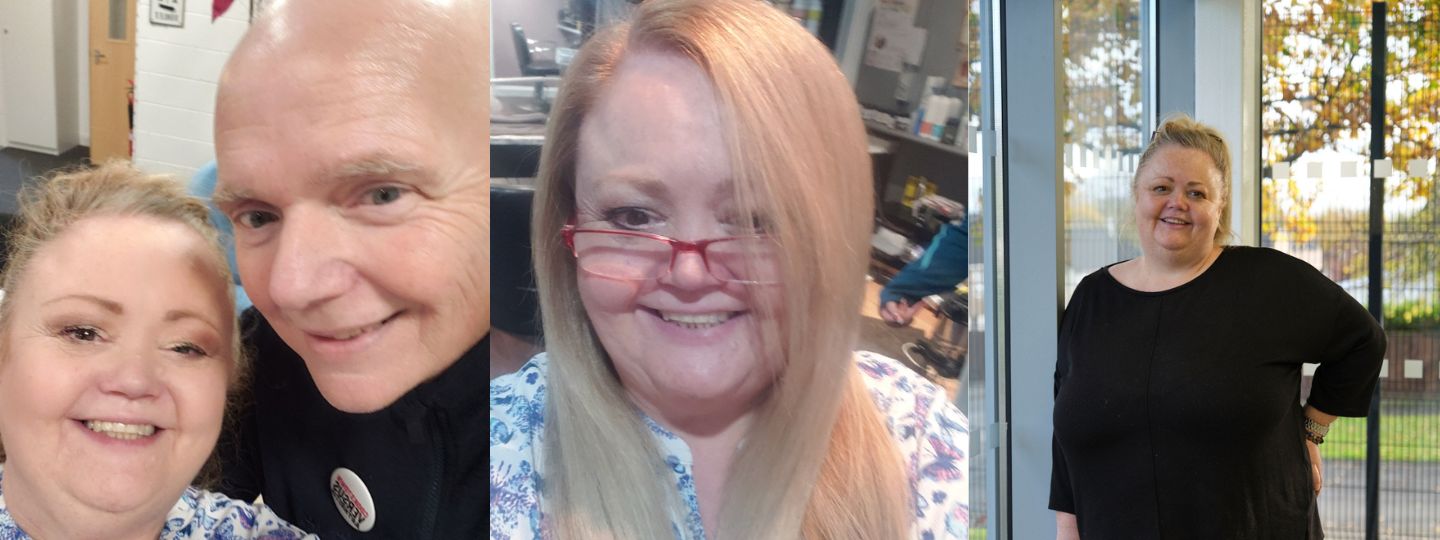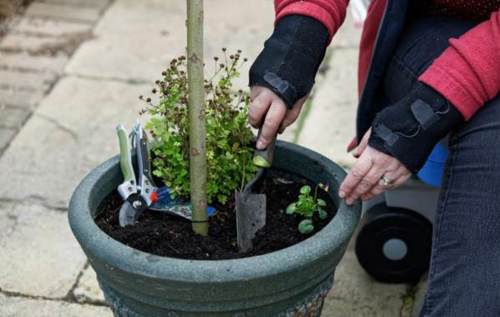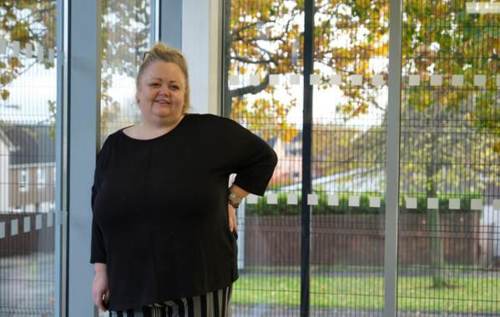Tracey, who has osteoarthritis, shares her tips for managing pain and fatigue
18 July 2023
Tracey, 58, who has osteoarthritis, was desperately waiting for knee surgery when she took part in a Versus Arthritis pain self-management course in Northern Ireland.
“My doctor said, ‘you need a knee replacement but not yet’,” says Tracey. “I could hardly walk. and I didn’t want to move because it was so sore. My mental health was in a bad way.”
Learning about self-management has helped Tracey better manage her pain and fatigue levels – so she decided to volunteer and teach the course to others. Here, Tracey shares what she learned on the course, as well as her own tips for managing pain and fatigue.
What is self-management?
If you have arthritis, there are plenty of healthcare professionals who will treat you – from GPs and rheumatologists to physiotherapists and occupational therapists.
But there are also small steps you can take to manage your condition yourself. This is sometimes called ‘self-management’.
“You only see your doctor, if you’re lucky, for around 10 minutes. But the rest of the time, you have to live in your body,” Tracey explains. “Self-management is all about starting where you are now, managing your condition, and then start to challenge yourself to make an improvement.”
“I still have arthritis. I still walk with a stick. The condition is still there but I’m not falling under it. I’m moving forward.”
What is pacing?

On good days, when your pain isn’t too bad, it’s easy to overdo it. But this can lead to more pain, which might eventually put you off doing daily chores or the activities you enjoy. This is sometimes described as the ‘boom and bust’ cycle.
To keep your pain levels in check, Tracey says that it’s all about pacing and planning your activities. This simply means balancing the activities you need to do with breaks and rest.
"Let’s say you want to weed your flower beds,” she explains. “If we're having a good day, we tend to say, ‘Right let's get stuck in’ and we’ll also try to clean the windows and hoover the floor. Then you spend the next three hours in bed.”
“Instead, plan and pace your activities. So, plan to take some weeds out of your flower bed for half an hour. Then have a cup of tea or a drink of juice, and rest for half an hour. After, check in with yourself and ask, ‘How do I feel?’. If you don’t feel too bad, you might do another half an hour in the garden.
“Don't keep going and going. That’s when you run into problems and overexert yourself. Depending on how you feel that day, adapt how much or how little you do, and plan in breaks.”
Check-in with yourself
The first step to pacing and planning is to work out how much of an activity you can do before a flare-up. To give you a helping hand, Tracey suggests keeping a diary, noting how long you did an activity and how you felt afterwards.
“Start where you are now, record what you do and what you felt like afterwards. That will help you plan future goals,” she says. “I continually have a notebook where I write down how long I spent on an activity.”
Goal setting

Some people find that setting small, meaningful goals helps them better manage their condition. Some goals might include squeezing a bit more movement into your daily routine, eating better, or simply making time for an activity you enjoy.
When you’re in pain, it can be hard to get started, but Tracey says to remember that “1% is better than 0%.”
Then the next step is to create an action plan. “Your action plan can include anything but just start from where you are,” says Tracey.
“If you set yourself too big of a goal, it seems too big and unachievable. At the self-management course we say, ‘How do you climb a mountain? One step at a time.’
“One of my goals was to go back swimming every week. I love swimming, but I can’t do it if there's a ladder into the pool. So, the first step of my goal was to call around the leisure centres to see which ones had steps rather than a ladder”.
“Another goal of mine is that I need to lose four stone. As part of my action plan, I said ‘I’m going to swap my usual tea and biscuits for a glass of water and an orange’. Then I’ll have a treat at the weekend’. Eventually the outcome will be that I’ve lost some weight.”
Find a middle-ground
Remember it doesn’t have to be all or nothing.
“If you don’t have the energy or motivation to shower and wash your hair, go wash your face with a flannel or have a sink wash,” says Tracey. “Or if you want to start exercising, walk to the first lamppost and back. It's still an achievement and you've challenged yourself.
Dealing with difficult emotions
Pain and fatigue don't just affect your physical health, it can also take a toll on you emotionally too.
Remember if you need support, you can always call our Helpline or reach out to our Online Community. Plus, there are also ways you can look after yourself emotionally too.
Imagine a family member is getting frustrated at you for cancelling plans. Tracey suggests encouraging them to use ‘I’ language instead of ‘you’ language.
“Let’s say my daughter asks, ‘Mummy can you drive me to town?’” explains Tracey. “I might say ‘Sorry I can’t, I’m not feeling great’ and she might respond ‘Mummy, you’re always saying you can’t do this. You never have time for me’.
“That’s a ‘you’ message I’m hearing but it would be better if she used an ‘I’ message. What the daughter could have said is ‘I don’t really understand what you mean? Explain to me exactly how you feel?’ This gives you the chance to explain what your life is like. Then they’ll maybe understand and cope better with their emotions.”
“We also teach people to speak to their health professionals, so that they can voice their opinion and have you the confidence to be involved in their care.”
We’re here to help
If you need advice or support, you can:
- Call our free helpline on 0800 5200 520
- Chat to our Arthritis Virtual Assistant
- Join our online community
- Stay in touch and follow us on Twitter, Facebook and Instagram.